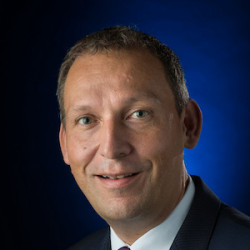CIERA Interdisciplinary Colloquium: Thomas Zurbuchen: How NASA is Exploring the Secrets of the Universe, and Improving Life on Earth: Role of Commercial and International Partnerships

When:
Monday, May 13, 2024
2:30 PM - 3:30 PM CT
Where: Technological Institute, F160, 2145 Sheridan Road, Evanston, IL 60208 map it
Audience: Faculty/Staff - Student - Post Docs/Docs - Graduate Students
Contact:
CIERA Astrophysics
(847) 491-8646
CIERA@northwestern.edu
Group: CIERA - Interdisciplinary Colloquia
Category: Lectures & Meetings
Description:
Dr. Thomas H. Zurbuchen is a professor and leader of the Space Programs at ETH Zurich, in Switzerland. Known in the space community as “Dr. Z,” he is the longest continually serving head of science at NASA, a post he held from 2016 to 2022. As NASA associate administrator for the Science Mission Directorate, he was responsible for all aspects of NASA leadership in space science. During his tenure, NASA launched 37 science missions and started 54, including the James Webb Space Telescope, two Mars landings, the Ingenuity helicopter, the Parker Solar Probe, and the DART mission. Zurbuchen also conceived and led the Earth System Observatory, an advanced multi-platform observatory that creates a 3D holistic view of the Earth, from bedrock to atmosphere.
He has a MS and PhD of physics/astrophysics from the University of Bern and as a Professor worked at the University of Michigan as a researcher, teacher and innovator for two decades. He was the founder of the award-winning Center for Entrepreneurship there which achieved top rating within the US for their educational and experiential programs. He is a member of the Swiss Academy of Engineering Sciences, recipient of the NASA Outstanding Service Medal, associate fellow of the American Institute of Aeronautics and Astronautics, and recipient of the Presidential Rank Award, Distinguished Level. He is a winner of the excellence in international cooperation award of the International Astronautical Federation (IAF), and has received multiple honorary doctorates.
Host: Vicky Kalogera
Talk Title: How NASA is Exploring the Secrets of the Universe, and Improving Life on Earth: Role of Commercial and International Partnerships
Talk Abstract:
Since NASA was established in 1958 by President Eisenhower, the expansion of human knowledge of the Earth and of phenomena in the atmosphere and space has been the priority of NASA. Discovery and exploration occur both with robotic and human exploration and it has changed how we think about the universe, our planet, and life beyond Earth. This presentation will focus on a few recent missions, to demonstrate the power of space as a frontier of discovery, and to show how these missions rely on teams that make the impossible possible. It will particularly focus on commercial and international partnerships that are a critical part of NASA’s Science program.